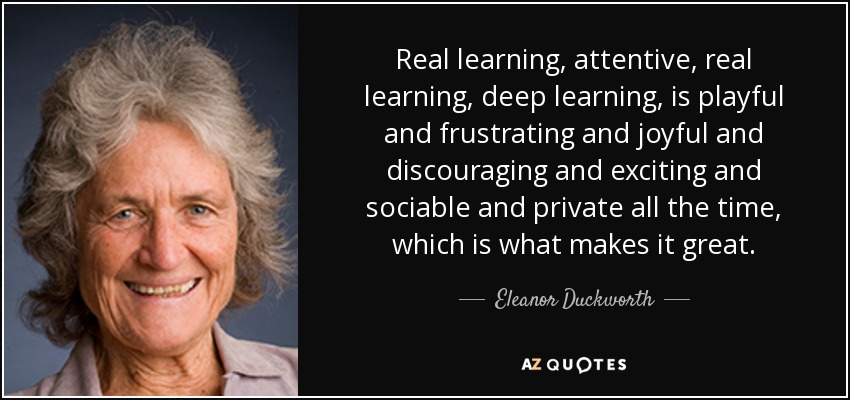Where do the theorists fit in with this connection between community and learning?
Dewey
"learner centered and less teacher dominated learning environment" (Ultanir, 201)
"the child own experience must be acknowledged" (Ultanir, 206)
The idea of social experience and its impact on learning is closely related to Bruner's ideas of engagement. Social discussion provides students with authentic motivation and a reason to apply and develop their problem solving skills.
Piaget
"the most frequent cause of accommodation is the interaction, and especially linguistic interaction, with others" (Glaserfeid, 66)
"motivation to master new problems is most likely to spring from having enjoyed the satisfaction of finding solutions to problems in the past" (Glaserfeid, 181)
This gradual change supports the instructional practice of connecting prior knowledge with new learning, using each lesson and activity to build on a big idea rather than focus on specific content points.
Vygotsky
A direct connection to the importance of a classroom community.This raises the question of what are these cultural and societal norms? Are they different in and out of the classroom? In school, are we teaching students to norms of our society, or teaching them to seek out norms in order to understand social arrangement and communication?
Bruner
"set purpose for learning- motivate further exploration" (Jones)
How do the verbs we use in student objectives define their learning experience?
What are our expectations of education and how does these expectations impact the learning models used in classrooms?
What is the difference between memory and understanding? How do we assess this difference?




